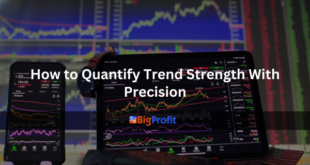Rate of Change Indicator (ROC) is a momentum technical trading tool. It compares current prices with those from a defined number of periods ago and plots this data over or under a fixed Zero Line.
ROC can assist traders in detecting divergences, overbought/oversold conditions and centerline crossovers. Furthermore, traders should look out for trend reversal opportunities when the indicator touches extreme values of overbought/oversold conditions or crosses centerline lines.
ROC
Rate of Change (ROC) indicators are momentum indicators that compare the current price of an asset with its price from a set period ago. Like other momentum indicators, ROC can help traders spot divergences on charts as well as confirm or deny trends, and early signals that a trend might be shifting direction. ROC readings provide technical trading tool and serve as useful technical trading tools when trading technical markets such as Forex.
When the Relative Oscillator Crosses Zero Line (ROC), it indicates an overbought or oversold condition of the market and signals when long or short positions should be opened accordingly. A trader may then use other indicators such as MACD to confirm or signal potential trends reversals – however ROC tends to experience whipsaws when used with short timeframes; by increasing it to longer intervals can help avoid false signals.
Positive ROC values typically represent bullish trends with potential upward trends; conversely, negative values indicate bearish tendencies and downward trends. If the ROC indicator crosses its centerline it indicates potential changes in trend direction; however, traders should keep in mind that centerline crossovers can sometimes generate false signals, particularly if using an average moving average of the ROC values as its basis.
Divergences between the ROC indicator and an asset’s price are another essential aspect of an effective trading strategy. When the ROC indicator shifts towards positive extremes while its price moves in an opposite direction, this indicates a divergence that could indicate that market consolidation may be underway.
Traders must pay careful attention when the ROC indicator moves above its overbought or oversold levels, as these are key markers for market reversals. In the chart shown above, as soon as it crossed above overbought levels the price reversed rapidly resulting in a buy signal for one stock.
RSI
The relative strength index (RSI) is a technical indicator used in day trading that measures price changes quickly in an asset or commodity, using a mathematical formula comparing gains to losses over a given timeframe. Also referred to as an oscillator, the RSI provides traders with valuable buy and sell signals; however it should be remembered that no technical indicator can provide 100% accurate signals; hence using additional technical analysis tools is vital to ensure accurate interpretations.
RSI is calculated using an average of price gains and losses over 14-day timeframe, divided by its prior values and converted into percentage. Overbought/oversold levels for this indicator can be set between 70-30 and the chart can help traders spot trends or reversals more easily.
As an example, staying in overbought territory for an extended period may indicate impending price correction or trend reversal; conversely, staying in oversold territory for too long could signal an emerging bullish trend.
Divergences can appear both positively and negatively in an RSI chart, though usually when combined with price changes that support them. For instance, bearish divergences within an uptrend would exhibit themselves with lower highs on the RSI accompanied by higher lows on the price chart.
To achieve optimal results, an RSI chart should be combined with a price chart and an indicator line triggered by a nine-day exponential moving average (EMA) of MACD. This combination will give a more complete picture of any market; traders should pay particular attention to overall trends as well as any news releases which might affect prices when trading using this indicator.
TRIX
Traders use the TRIX indicator, a momentum indicator based on triple exponential moving average (EMA), to detect overbought and oversold stocks as well as major turning points in the market. Furthermore, this leading indicator effectively filters market noise by using three separate moving averages to smooth out data; making it a leading indicator that reduces false indicators while leading in its own right. It should be noted however, that in order for it to be accurate TRIX needs to be used alongside other indicators (chart patterns etc), for accurate readings to occur.
EMAs can be found in most trading platforms and customized to fit individual traders’ needs. For greater sensitivity, traders may wish to select longer timescales while for reduced sensitivity shorter ones are usually more suitable. Furthermore, using different periods can reduce oversmoothing which could result in unpredictable signals.
TRIX is similar to other momentum indicators like MACD and RVI in that it can signal price movement through divergences with the underlying prices. When the TRIX indicator makes lower highs than its underlying prices do, this indicates a weakening uptrend; conversely when both sets of figures move in opposite directions it indicates weakening downward momentum.
TRIX stands out as an EMA-based indicator, meaning it produces leading signals and thus is especially suitable for trading trending markets; however, traders should keep in mind that these types of indicators can give false signals on short timeframes.
Jack Hutson, editor of Technical Analysis of Stocks and Commodities magazine, created TRIX in the early 1980s as both a graphical oscillator and momentum indicator, offering buy and sell signals by analyzing signal line crossovers. Based on an exponential moving average (EMA), TRIX filters out insignificant price movements while filtering them out just like MACD does; traders should keep an eye out for crossing to either side of zero line to signal buy/sell decisions accordingly. A cross up to the upper side indicates buy/sell signals while one that crosses over is considered sell signals; look out for a cross up/down line crossover where that indicatess a buy signal or vice versa indicates a sell signal – traders should watch for crosses to either side as signals buy/sell signals respectively if these indicators appear.
Aroon
Tushar Chande created the Aroon indicator in 1995 as a trend-following tool. First introduced as part of his trading platform, this trend-following indicator allows traders to easily detect developing trends, corrective periods or market reversals. Comprised of two lines which measure distance between price’s highest high and lowest low over a specific time period; those moving upward are known as Aroon Up while those moving downward are Aroon Down – their difference signifies current trend direction; it can be used either on its own or alongside other indicators to confirm trade signals.
Aroon indicator calculation is straightforward. To create its resultant percentage figure, divide the time between the lowest low of a bar’s most recent lowest low and its highest high by its period length (typically 25) then multiply that value by 100; higher numbers indicate stronger trends while lower ones signal weaker ones.
Though often compared to the Average Directional Index (ADX), Aroon differs significantly in several key ways from it. Although both indicators can detect trends, ADX cannot show their strength or direction clearly enough; moreover it uses more complex formulas and Average True Range (ATR) smoothers that lag behind price changes; by contrast Aroon doesn’t use any smoothing or weighted factors and therefore responds more rapidly when prices change.
Aroon Up and Down lines provide traders with trader-friendly buy and sell signals when used alone as an indicator. Buy signals can occur when either Aroon Up crosses above Aroon Down; on the contrary, when Aroon Down crosses beneath Aroon Up this indicates an uptrend; conversely when Aroon Down crosses below Aroon Up it signals an obvious downtrend.
Traders can adjust the length of an Aroon period to best meet their trading style and market conditions. A standard 25-period length may not meet some traders’ needs, while longer periods can help more accurately identify trend peaks. Unfortunately, long-term periods may cause the indicator to move around more and generate false or late signals; nevertheless, the Aroon indicator remains an invaluable tool for identifying emerging trends and anticipating reversals.
 BigProfit Profit through Algo & Technical Trading
BigProfit Profit through Algo & Technical Trading




